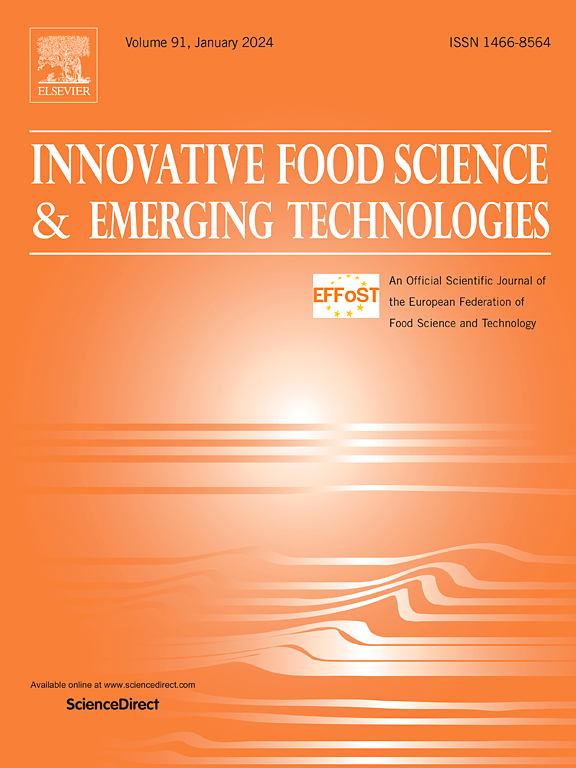Innovative deep eutectic solvent approach vs. conventional alkaline for kenaf seed protein extraction: A comprehensive comparison of structural, thermal, nutritional and techno-functional properties
IF 6.3
1区 农林科学
Q1 FOOD SCIENCE & TECHNOLOGY
Innovative Food Science & Emerging Technologies
Pub Date : 2025-02-21
DOI:10.1016/j.ifset.2025.103972
引用次数: 0
Abstract
This study was the first to compare the effects of innovative deep eutectic solvent-based green extractant (ChCl:U and ChCl:Gly) and conventional alkaline solubilisation-acid precipitation (CA) approaches on kenaf seed protein extractability, structural, thermal, nutritional and techno-functional properties. Both CA and ChCl:U methods showed better protein extractability than ChCl:Gly. DES-based extraction induced lesser structural changes in kenaf seed protein compared to CA method. All proteins displayed high digestibility, but DES extraction produced more balanced amino acid ratios. Both CA and ChCl:U methods exhibited superior functional performance at all the tested pH compared to ChCl:Gly. Notably, CA demonstrated superior emulsification properties, whereas ChCl:U exhibited the highest foaming properties. The emulsification and foaming activities with all extraction methods were the highest in alkaline conditions, while better stabilities were observed in acidic conditions. Overall, the DES protein extraction method using ChCl:U can be employed as green alternative for extracting kenaf seed protein.

创新的深共熔溶剂法与传统的碱性法提取红麻种子蛋白:结构、热、营养和技术功能特性的综合比较
本研究首次比较了创新的深共晶溶剂基绿色萃取剂(ChCl:U和ChCl:Gly)与传统的碱增酸沉淀(CA)方法对红麻种子蛋白质可萃取性、结构、热、营养和技术功能特性的影响。CA法和ChCl:U法的蛋白质提取率均优于ChCl:Gly法。与CA法相比,des法提取的红麻种子蛋白结构变化较小。所有蛋白质均表现出较高的消化率,但DES提取的氨基酸比例更为平衡。与ChCl:Gly相比,CA法和ChCl:U法在所有测试pH下都表现出优越的功能性能。值得注意的是,CA具有优越的乳化性能,而ChCl:U具有最高的发泡性能。在碱性条件下,各提取方法的乳化和起泡活性最高,而在酸性条件下,各提取方法的稳定性较好。综上所述,ChCl:U萃取法可作为提取红麻种子蛋白质的绿色替代方法。
本文章由计算机程序翻译,如有差异,请以英文原文为准。
求助全文
约1分钟内获得全文
求助全文
来源期刊
CiteScore
12.00
自引率
6.10%
发文量
259
审稿时长
25 days
期刊介绍:
Innovative Food Science and Emerging Technologies (IFSET) aims to provide the highest quality original contributions and few, mainly upon invitation, reviews on and highly innovative developments in food science and emerging food process technologies. The significance of the results either for the science community or for industrial R&D groups must be specified. Papers submitted must be of highest scientific quality and only those advancing current scientific knowledge and understanding or with technical relevance will be considered.

 求助内容:
求助内容: 应助结果提醒方式:
应助结果提醒方式:


